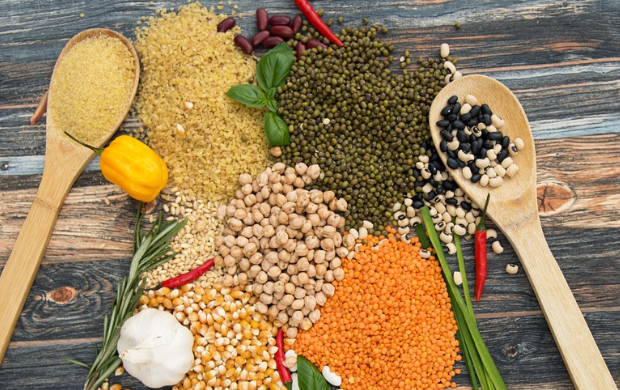February 10 is World Pulses Day. But, what exactly is World Pulses Day?
🔸Nutrition
— Food and Agriculture Organization (@FAO) February 9, 2021
🔸Food security
🔸Climate Change
🔸Sustainable Agriculture
🔸Biodiversity...
Pulses help improve all of the above. They are more than just small seeds!
This #WorldPulsesDay tell us what your favourite pulses are 👇https://t.co/XmWy3jSVpg#LovePulses pic.twitter.com/VRY58xWtvG
This is an occasion to increase awareness of the nutritional benefits of pulses and their contribution to achieving a planet without hunger and a healthy food system through sustainable food production.
In addressing social issues such as hunger, food security, human health and education, soil health, and the environment, pulses are important, thus contributing to the Sustainable Development Goals and the Hand-in-Hand Initiative of the Food and Agriculture Organization (FAO).
What Are Pulses?

If you are not familiar with pulses, you are not alone. It is the official name for the food category, including dry peas, chickpeas, beans, and lentils. Most Americans, in truth, have no idea what pulses are. But many of those same individuals are likely to have a can of chickpeas, a bag of dried lentils, or some black beans lurking on their kitchen cupboard shelves. Since 2016 was officially declared the International Year of Pulses by the United Nations, it's only a matter of time before this pantry staple becomes a household word as well.
To celebrate this year's world pulses day, here are five benefits of eating pulses!
Related Article: Lab-Made Corn Cob, Next Staple Food?
Not expensive
You can purchase enough dried pulses for only a few dollars to produce many servings. The pre-cooked, frozen versions are somewhat more expensive compared to the fresh ones. But, relative to the cost of meat and other traditional protein sources, they are also a cheaper alternative.
Great source of protein
Aside from being cheaper, pulses are also very great meat substitutes for getting your daily dose of protein. Surprisingly, a remarkable 25 grams of protein is contained in 100 grams of dry lentils! Pulses consume large quantities of water while frying, thereby reducing their protein content to about 8 percent. Yet, you can also improve the protein content of cooked pulses by merely mixing them with cereals in your dinner, for example, lentils with rice.
Related Article: EU: Mealworms Now Safe for Human Consumption
Pulses regulate pulses!
Pulses are low glycaemic index foods. They help regulate blood sugar levels and insulin, making them suitable and desirable for weight loss for people with diabetes.
Good for weight loss (and balanced diet)
A survey of people on a low-calorie diet found that those who consumed the most pulses lost four times more weight (about half a cup a day) than those who ate the least (less than a tablespoon per day).
9 grams of protein and 7 or more grams of fiber provide a half-cup of cooked pulses. They are also highly nutrient-dense - high levels of iron, magnesium, zinc, potassium, and B vitamins. They also have more antioxidants, including berries and pomegranates, than much-touted antioxidant powerhouses.
Environmentally friendly
Pulses have a low carbon footprint and consume less water than most foods substantially. For instance, though raising 1 pound of pulses takes just 43 gallons of water, a farmer would need 800 to 1,000 gallons of water to produce 1 pound of beef.
They can also be stored for a long time and can also help minimize solid food waste caused by the rotting and productive waste of food.
Related Article: Your Organic Meat Isn't Helping Environment; Here's Why
ALSO READ: Common Every Day Activities that Help Mitigate Climate Change!
For similar news, don't forget to follow Nature World News!
© 2026 NatureWorldNews.com All rights reserved. Do not reproduce without permission.





